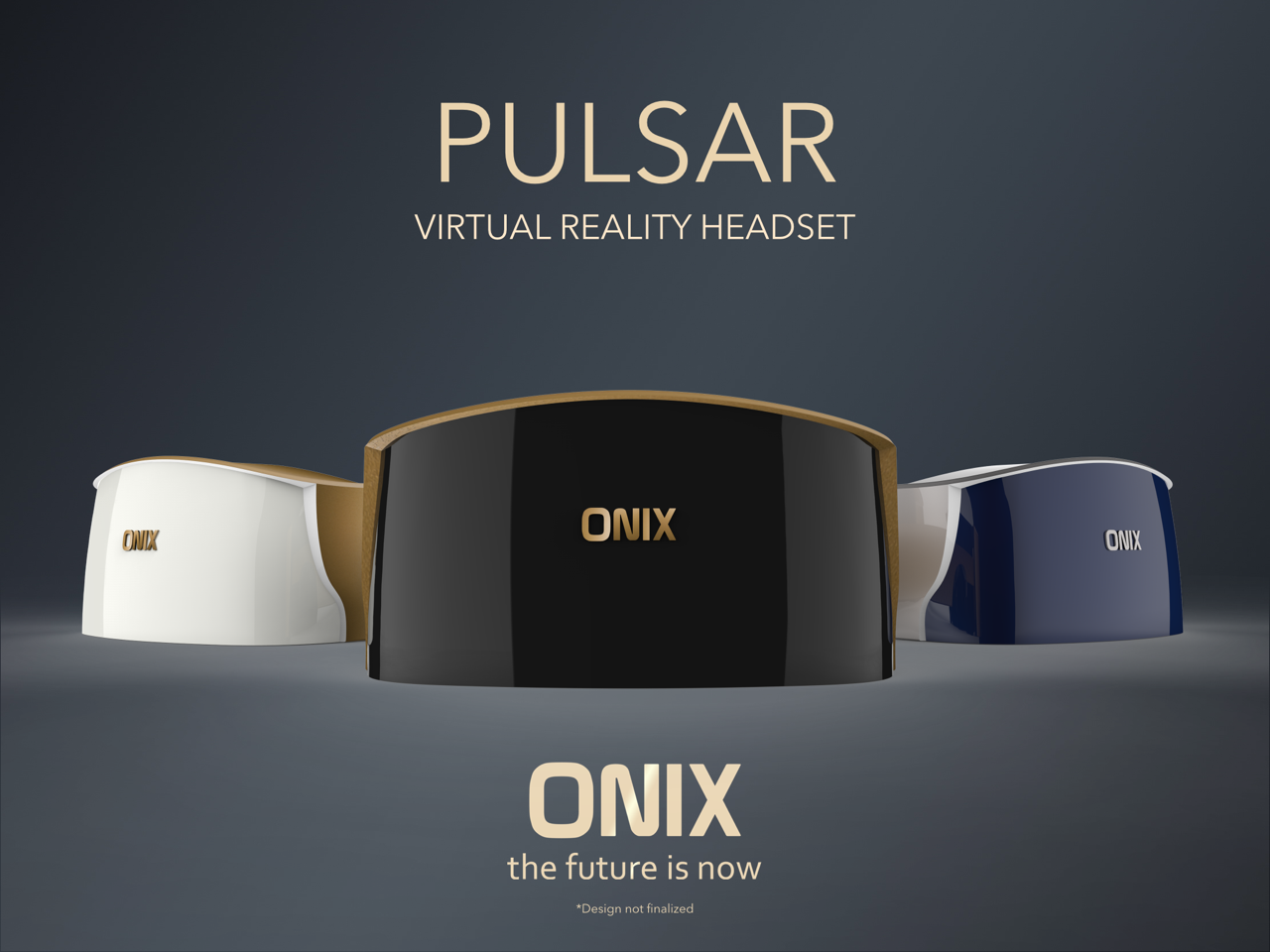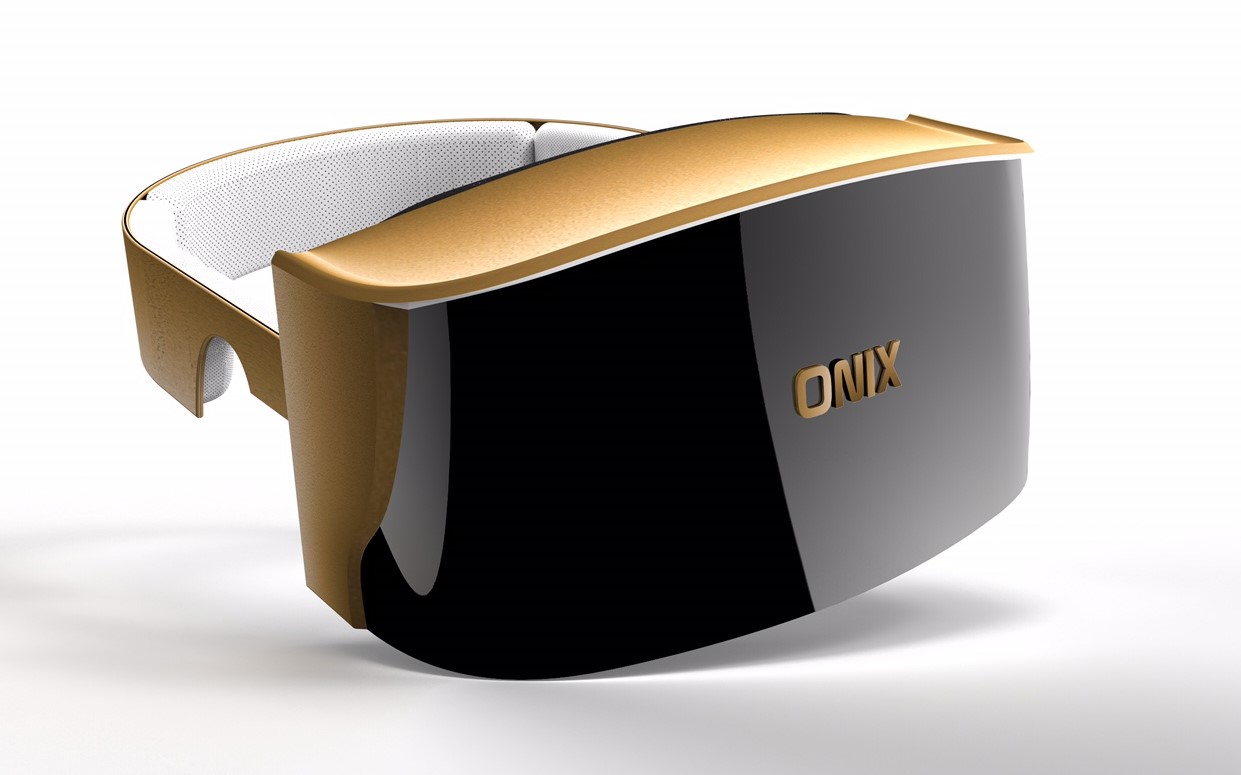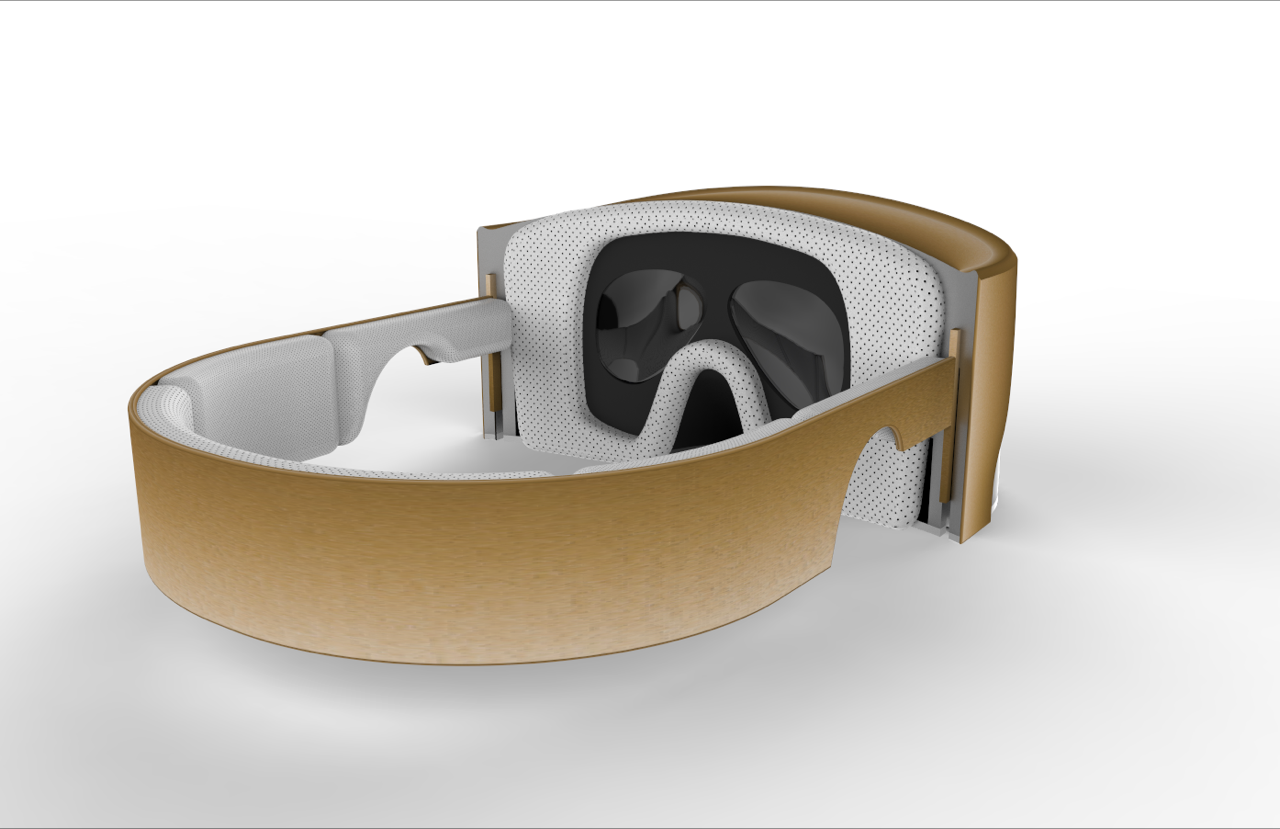Choose Your Own VR: Onix VR Is Building A Modular HMD With A Curved 120Hz 4K Display
During Immersed 2016, we had the chance to speak with Alen Peric, the founder of Onix Virtual Reality, a VR HMD company that “is taking a modular approach to upgradability.” Onix is designing a high-end VR headset called Pulsar that features a curved 4K 120Hz display that you can use as a tethered, wireless, or self-contained device.
The basic unit needs a PC to access content, but consumers will have the option of purchasing upgrade modules that change the core function of the hardware. Onix VR plans to release a tether-free upgrade to make the Pulsar HMD wireless, and the ultimate configuration is the self-contained unit. An upgraded head strap that includes all the computational power necessary for high-end virtual reality experiences is in the works to make that possible.
Onix VR is designing the Pulsar HMD around the use of a curved display. Peric explained that the curve of the screen “helps bring the focal point of the display closer to the lenses,” which allows for wider viewing angles and helps “combat chromatic aberration.”
Onix VR is using the display from the LG G Flex 2 in its prototype design, but the company is planning to support 4K resolution at 120Hz when the final product hits the market. Onix VR is in talks with multiple companies about designing a screen with those parameters for the Pulsar HMD. The base model will interface with a computer through a Thunderbolt 3-compatible USB port (Peric didn't specify, but it must be USB Type-C), but Peric didn’t mention the company's plans for wireless communication.
Peric feels confident that the GPUs that hit the market next year will be capable of delivering the performance necessary for a 4K 120Hz display, but he acknowledged that his company is going to have to wait for the necessary support hardware before the Pulsar HMD can become a viable product.
He also said that Onix VR is targeting an $800 to $1,000 price for the base model Pulsar headset. He didn’t say how much the upgrades will be, but you can imagine the CPU and GPU necessary for a self-contained VR HMD would drive the price up significantly above the base model.
Onix VR is still in its infancy, but it’s moving quickly. The 22-year-old Peric launched the company just four months ago, and he and his Chief Design Officer, Klemen Verbovšek, are working fast to bring their ambitious project to life. Onix VR is still in the concept phase, but the company anticipates having a working prototype of its Pulsar VR HMD within the next few months and is shooting to launch in Q4 2017.
Get Tom's Hardware's best news and in-depth reviews, straight to your inbox.
Update, 10/21/16, 4:13pm PT: Updated spelling error in Alen Peric's name.
Kevin Carbotte is a contributing writer for Tom's Hardware who primarily covers VR and AR hardware. He has been writing for us for more than four years.
-
memadmax Hey thats pretty cool, dig the curved screen and it makes sense.Reply
Not so sure about the "upgradeability" part however.
Tier'd versions of this product would probably make more sense. -
TechyInAZ 4k 120hz!! Wow. I'm glad it's a years away, only the most powerful GTX 1080 SLI/Titan XP systems could run that today.Reply -
scolaner Nice! I swear, I was suggesting this idea to someone the other day. Make VR HMDs like PCs...want inside-out tracking? Buy that module. Need beefier CPU/GPU? Ditch the mobile compute module and connect directly to the PC. Demand the highest resolution possible? Pop on the 4K display instead of the 1080p display. Etc.Reply -
kcarbotte Reply18759371 said:4k 120hz!! Wow. I'm glad it's a years away, only the most powerful GTX 1080 SLI/Titan XP systems could run that today.
I don't even think you'd be able to run it at all on anything available today.
That question was asked but I had to cut it because someone walked into the shot.
-
dabeargrowls Even Nvidia will tell you that graphics technology (Including their latest 1080) are not powerful enough to crank out VR in 4K. It will be a while before that happens especially using high quality graphics in the VR app. You throw in that low res crap like half of the apps coming out these days then maybe.Reply -
alidan Reply18761493 said:lmao this guy thinks we'll be able to do 4k 120hz next year... WHAT IS HE SMOKING?!
I would have to see this as headroom and future proofing.
I am looking at a 4k hmd that is 60 right now just to watch video on because that would be a full 1080p per eye, good enough for video. -
anbello262 Actually, given that VR games are usually very "light" on graphics, this is not such an unthinkable idea. If we can run AAA games at 4k 60fps high/ultra with 1080sli, for example, I don't think it would be hard to do the same with many VR games.Reply -
cryoburner Reply18759733 said:18759371 said:4k 120hz!! Wow. I'm glad it's a years away, only the most powerful GTX 1080 SLI/Titan XP systems could run that today.
I don't even think you'd be able to run it at all on anything available today.
That question was asked but I had to cut it because someone walked into the shot.
Technically, 4k could work if it were combined with a fast eye-tracking system and foveated rendering. If the headset knows where you are looking, the simulation can render what appears at the center of your field of view using the headset's full resolution, while everything in your periphery could be rendered at a much lower resolution, then those two images could be softly blended together. That way, everything you look at can appear sharp, while the areas covering your peripheral vision, where your eyes can't see much detail anyway, can be left blurry.
As a simplified example, with a setup like that, offering around 2048x2048 pixels per eye, you might render a 1024x1024 area at full resolution centered on what the viewer is looking at, filling around one quarter of the display area. For the other three quarters of the display covering the peripheral vision, you might only need to render at a fraction of the display's resolution, perhaps equivalent to 512x512 pixels in total. Combined, your system would only need to render about the same number of pixels as the current Oculus Rift or HTC Vive, only the viewer would see roughly 3 times the pixel density. The eye-tracking tech already exists, and it seems fairly likely that we'll see it incorporated into the next-generation of headsets from companies like HTC and Oculus.
Of course, these guys didn't mention anything about eye tracking or foveated rendering. Without that kind of tech, I kind of doubt 4k would be a particularly usable feature by the end of next year. It would probably be a good idea for them to look into incorporating some kind of eye-tracking, since their headset could be a difficult sell if another company comes out with a competing 4k headset that can run fine on mid-range hardware. -
Nick_102 For whoever interest, there is already 4K resolution HMD released some days before.Reply
http://en.pimaxvr.com/
And it is very cheap because its made in China.
However, today's graphic cards still can't run any game nicely in 4k.
It also doesn't have special input devices like HTC / Occulus provides.
Some review say user really don't quite see the "pixels" in this high density screen.
I believe People mainly buy this to watch 3D po..em... :D


